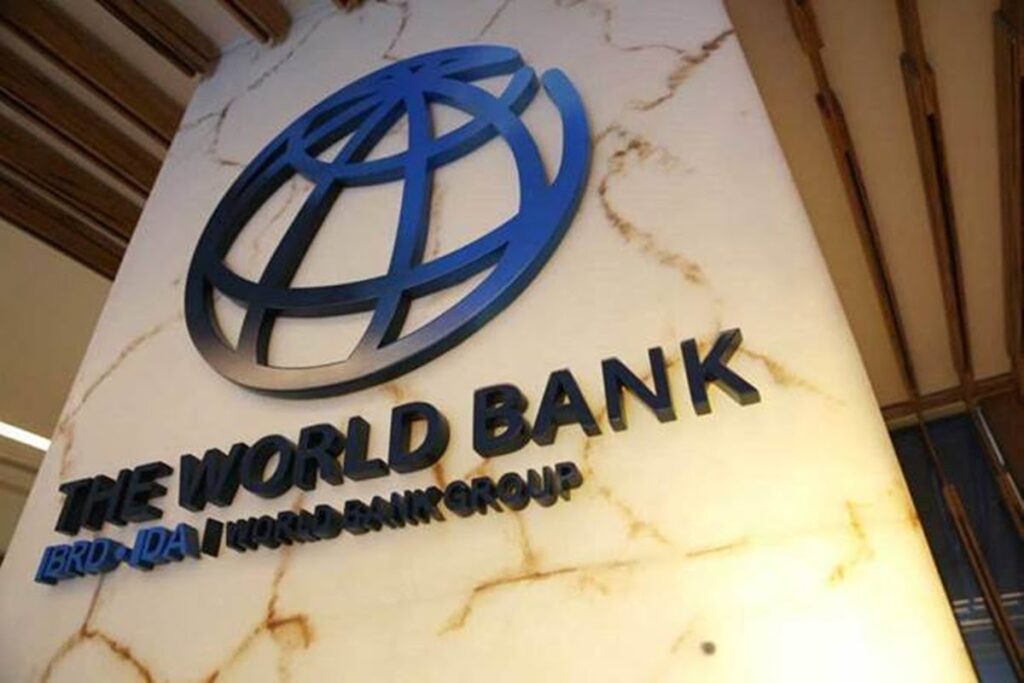Diaspora remittances to Nigeria were $19.5 billion in 2023, accounting for 35% of such transfers to sub-Saharan Africa, despite a 2.9% decline year-on-year, according to a new World Bank report.
In the “Migration and Development Brief,” the World Bank Group projected that global remittances will grow by 2.3% in 2024 and 2.8% in 2025, reaching $690 billion next year.
The United States remained the largest source of remittances globally, followed by Saudi Arabia and Switzerland, according to the report.
Central Bank of Nigeria (CBN) Governor Olayemi Cardoso mentioned last week that Nigeria anticipates doubling its Diaspora remittances soon to enhance foreign exchange earnings.
The World Bank highlighted that remittances are a critical source of external finance for low- and middle-income countries, totaling an estimated $656 billion in 2023.
In 2023, remittance flows to low- and middle-income countries (LMICs) were supported by strong labor markets in advanced economies, especially in the United States, which is the largest source of remittances and the primary destination for migrants.
Sub-Saharan Africa experienced a slight decline of 0.3% in remittance flows, but these funds still bolstered the current accounts of several countries facing food insecurity and debt issues.
The top five recipient countries for remittances in 2023 were India ($120 billion), Mexico ($66 billion), China ($50 billion), the Philippines ($39 billion), and Pakistan ($27 billion).
In smaller economies, remittance inflows constitute significant portions of Gross Domestic Product (GDP), underscoring their role in funding current account and fiscal deficits.
The report projected that remittances will grow by 2.3% in 2024 and 2.8% in 2025, reaching $690 billion by 2025.
Conversely, Foreign Direct Investment (FDI) flows, which have been declining since 2012, are unlikely to rebound strongly. In 2023, remittance flows to low- and middle-income countries (LMICs) grew by 0.7% to $656 billion, remaining the leading source of external finance for these countries, surpassing FDI.
Sending remittances, it noted, remained too costly due to limited competition among providers and inadequate cross-border inter-operability.In the Q4 of 2023, the global average cost of sending $200 was 6.4 per cent of the amount being sent, slightly up from 6.2 percent a year earlier and well above the Sustainable Development Goal (SDG) target of 3 per cent, the bank added.
Digital remittances had a lower cost of 5 per cent, compared with 7 per cent for non-digital methods, highlighting the benefits of technological advancements in reducing migrants’ financial burden.
Based on new census data and national statistics, the stock of international migrants, the bank said, is estimated to have been 302 million in 2023. The top destination countries are the United States, Germany, Saudi Arabia, Russia, and the United Kingdom.“Remittance flows to Sub-Saharan Africa reached $54 billion in 2023, a slight decrease of 0.3 per cent. The projected moderate growth in remittances reflects the expected slower growth in the United States while a feeble rebound is expected in flows from Europe.
“Countries heavily dependent on remittances include the Gambia, Lesotho, Comoros, Liberia, and Cabo Verde. Flows are projected to grow by 1.5 per cent in 2024. Sending $200 to the region cost an average of 7.9 per cent, almost unchanged from a year before,” it pointed out.
In 2023, remittance flows were affected by a combination of structural and cyclical factors in the source and recipient countries, including job markets for migrant workers in the source countries, immigration policies that affect the flow of migrant workers and their transit routes.
Others were their employment prospects; exchange rate movements of major source-country currencies against the US dollar; the prevalence of multiple exchange rates in recipient countries; as well as war and conflict.
“The largest recipients of remittances in the region during 2023-measured in US dollar terms include Nigeria, Ghana, Kenya, and Zimbabwe. Remittances have become the most important foreign exchange earner in several countries.
“The regional growth in remittances in 2023 was largely driven by strong remittance growth in Uganda (15 per cent to $1.4 billion), Rwanda (9.3 per cent to $0.5 billion), Kenya (2.6 per cent to $4.2 billion), and Tanzania (4 per cent to $0.7 billion).“Remittances to Nigeria, accounting for around 35 per cent of total remittance inflows to the region, decreased by 2.9 per cent to $19.5 billion,” the global bank added.
For Sub-Saharan Africa, the World Bank projected remittance growth to recover from -0.3% in 2023 to +1.5% in 2024. Risks to this outlook include slower growth in developed countries, which could reduce remittances from the African diaspora, and an escalation of the Israel-Gaza conflict that might disrupt supply chains. Additional risks include security issues in Burkina Faso, Chad, the Democratic Republic of Congo, Mali, Mozambique, and Nigeria, as well as climate risks.
Get instant and latest news updates via Our WhatsApp Community or Google News online channel.

